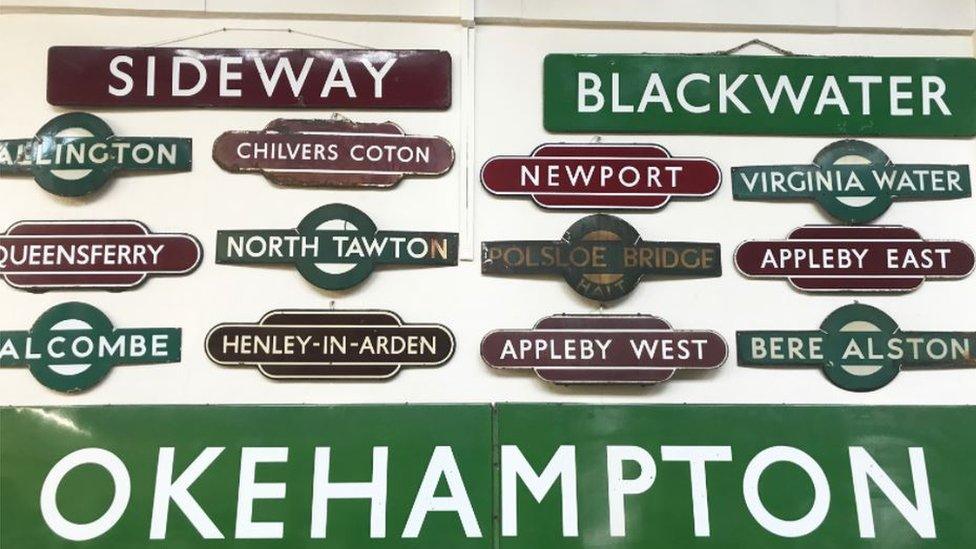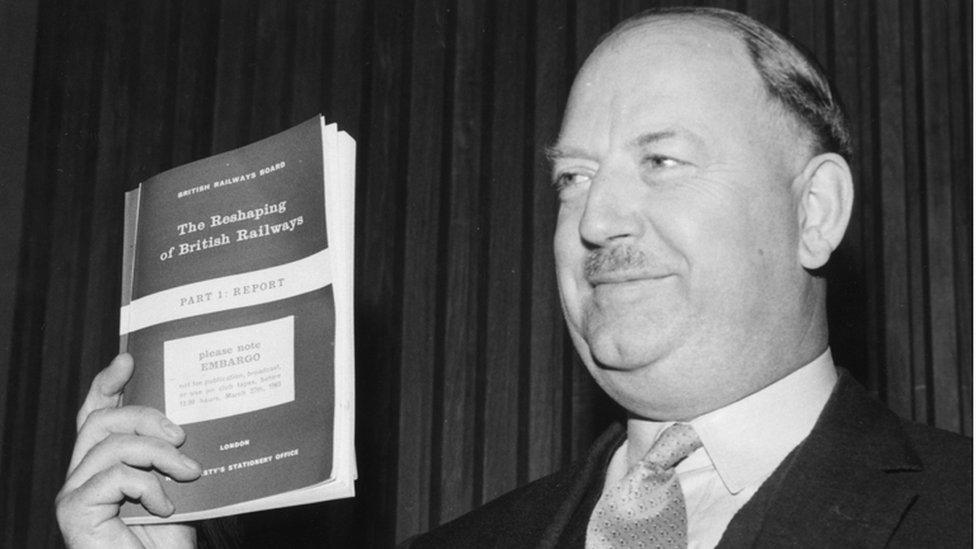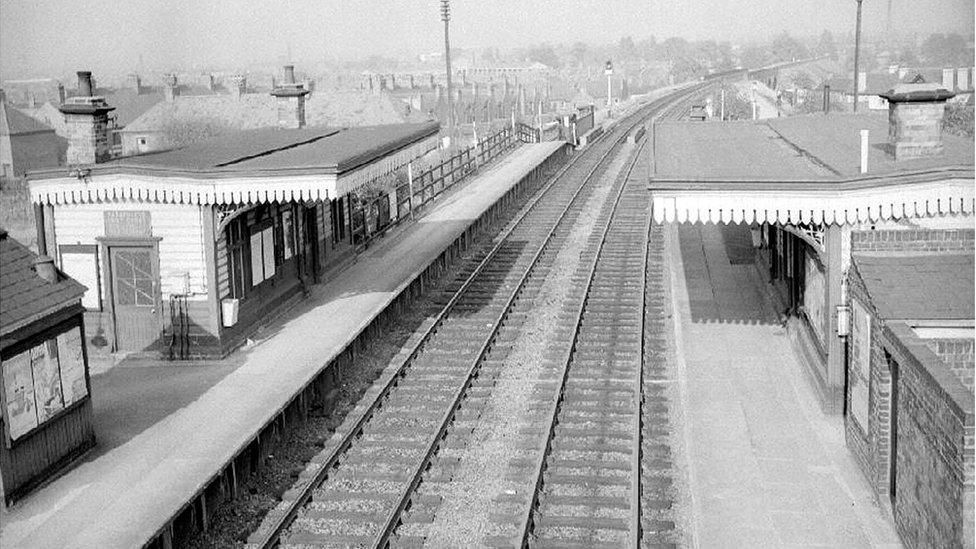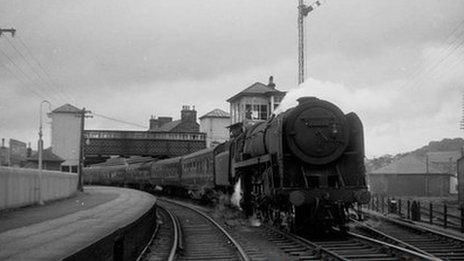Beeching cuts station sign collection goes for £93,000
- Published

The signs formed part of a wider collection of station signs and memorabilia
A collection of memorabilia that included signs from "lost" railway stations that closed in the 1960s and 70s has fetched £93,000 at auction.
The collection, which was discovered in a rail enthusiast's garage in Wiltshire, beat the auctioneers' initial valuation of £60,000.
The "lost" stations included Chilvers Coton, Nuneaton, St Ann's Park, Bristol, and North Tawton, Devon.
Richard Edmonds, auctioneer, said the sale had "captured the imagination".

The collection, which also included signs from London Underground, was expected to fetch up to £60,000
Mr Edmonds, owner of The Chippenham Auction Rooms, said many of the items came from stations that were closed during the so-called "Beeching cuts" of the 1960s.
"Because of that, the sale generated huge interest," he said.


Dr Beeching wrote a controversial report which was responsible for the station closures
What were the Beeching cuts?
In 1963, Britain's railways were running at a loss of £140m a year. Dr Richard Beeching was brought in by the British Railways Board to "make the railways pay"
His 27 March 1963 report resulted in the closure of 2,128 stations, more than 8,000 miles (12,875 km) of track and the loss of 67,700 jobs
Also included in the lots were historical items from London Underground and London Transport.
Mr Edmonds said the late collector's wife had "no idea" her husband owned so many signs.

Chilvers Coton Railway Station, pictured in 1964 before its closure. The station's sign was among the lots
"They are hugely in demand," he said. "There is a lot of nostalgia about railway memorabilia and some people even have memories of these signs in place on railway stations."
Mr Edmonds added it would be almost impossible to put together a similar collection today.
"We believe this collection was put together in the 1960s, as the signs were just being taken down," he said.
- Published27 March 2013
